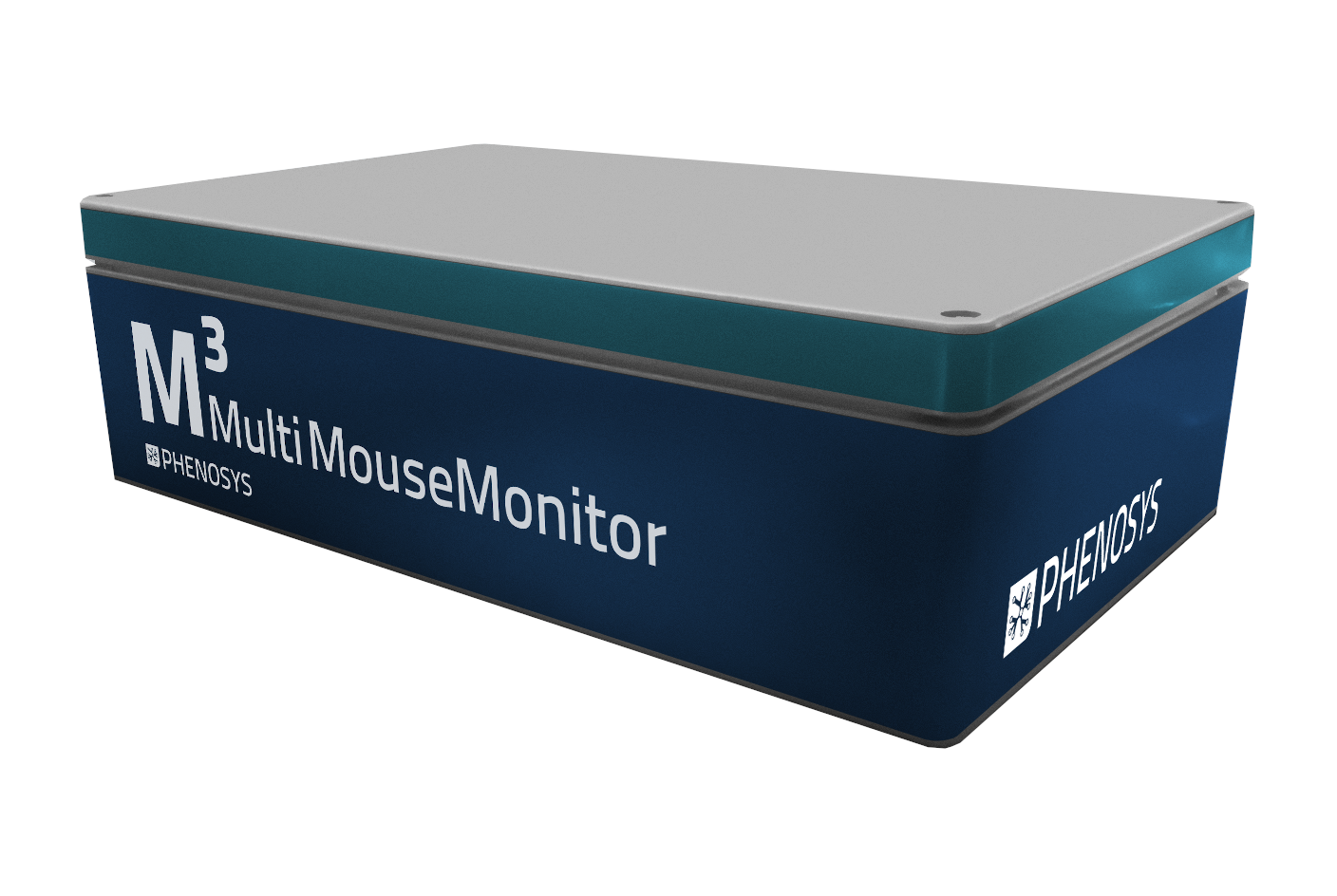
Activity and movement are fundamental diagnostic parameters of animal behavior. However, measuring long-term individual movement within groups was not possible until recently. Our MultiMouseMonitor provides accurate individual movement data in a fully automated way. This is a unique solution for the 24/7 long-term tracking and surveillance of individual animals living in groups which requires no operator attention.
The sensor plate placed underneath a cage detects individuals and tracks them as they move through the cage. Automated and long-term assessment of individual activity is made possible without having to place individuals in separate cages. The MultiMouseMonitor utilizes advanced RFID technology. See how it works in a video.
RFID technology
The MultiMouseMonitor is based on Radio-frequency identification (RFID) technology identifying and tracking an individual within a group of animals. All animals have to carry subcutaneous transponders. These transponders can be reused and are maintenance-free.
Two sizes are available: MultiMouseMonitor with 8 reader grid for Type III cages and MultiMouseMonitorXT with 20 reader grid for Type IV cages.
Type III cage (for mice): 382 x 220 mm
Type IV cage (for mice or rats): 556 x 334 mm
Schwab, K., Frahm, S., Magbagbeolu, M., Horsley, D., Goatman, E.A., Melis, V., Theuring, F., Ishaq, A., Storey, J.M.D., Harrington, C.R., Wischik, C.M., Riedel, G., LETC inhibits α-Syn aggregation and ameliorates motor deficiencies in the L62 mouse model of synucleinopathy, European Journal of Pharmacology (2024). https://doi.org/10.1016/j.ejphar.2024.176505
Kaixin Huang, Laura K Milton, Harry Dempsey, Stephen J Power, Kyna-Anne Conn, Zane B Andrews, Claire J Foldi (2023) Rapid, automated and experimenter-free touchscreen testing reveals reciprocal interactions between cognitive flexibility and activity-based anorexia in female rats eLife 12:e84961
https://doi.org/10.7554/eLife.84961
Alonso, L., Peeva, P., Ramos-Prats, A., Alenina, N., Winter, Y., & Rivalan, M. (2020). Inter-individual and inter-strain differences in cognitive and social abilities of Dark Agouti and Wistar Han rats. Behavioural brain research, 377, 112188.
Frahm, S., Melis, V., Horsley, D., Rickard, J. E., Riedel, G., Fadda, P., … & Schwab, K. (2018). Alpha-Synuclein transgenic mice, h-α-SynL62, display α-Syn aggregation and a dopaminergic phenotype reminiscent of Parkinson’s disease. Behavioural Brain Research, 339, 153-168.
Reismann, D., Stefanowski, J., Günther, R., Rakhymzhan, A., Matthys, R., Nützi, R., … & Naundorf, S. (2017). Longitudinal intravital imaging of the femoral bone marrow reveals plasticity within marrow vasculature. Nature communications, 8(1), 1-15.
Rivalan, M., Munawar, H., Fuchs, A., & Winter, Y. (2017). An automated, experimenter-free method for the standardised, operant cognitive testing of rats. PloS one, 12(1), e0169476.